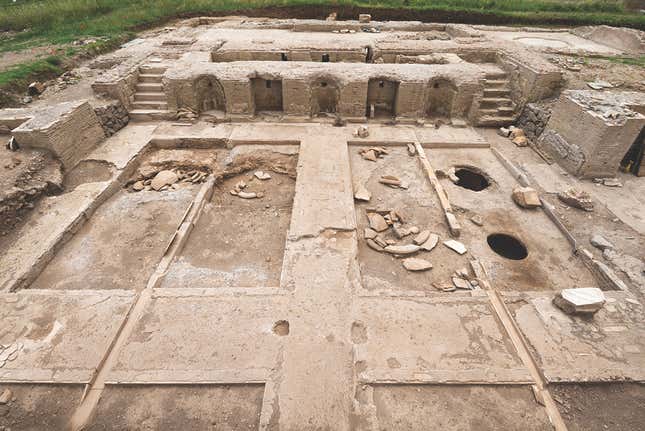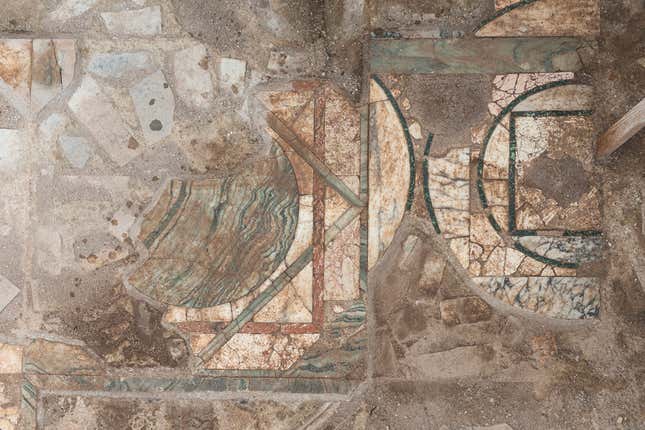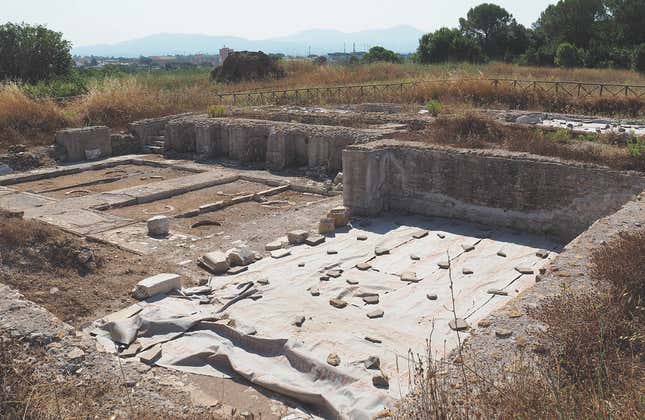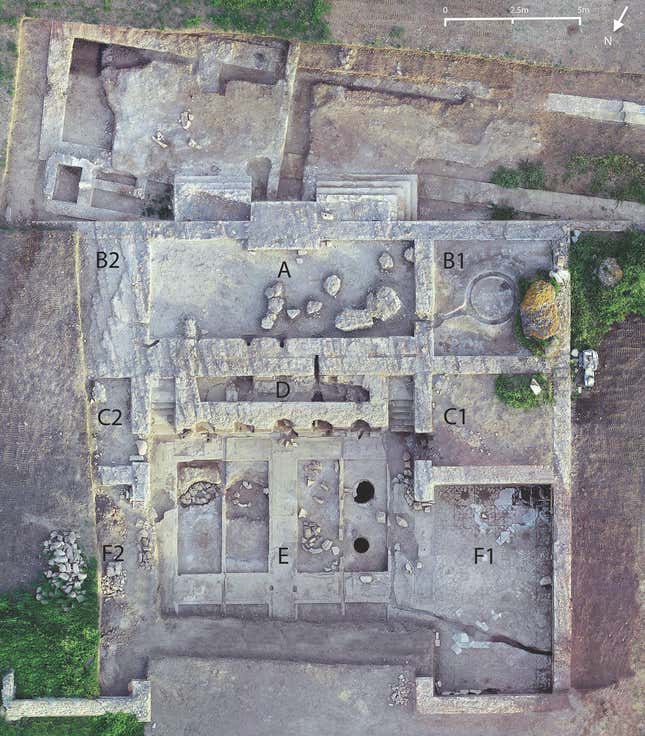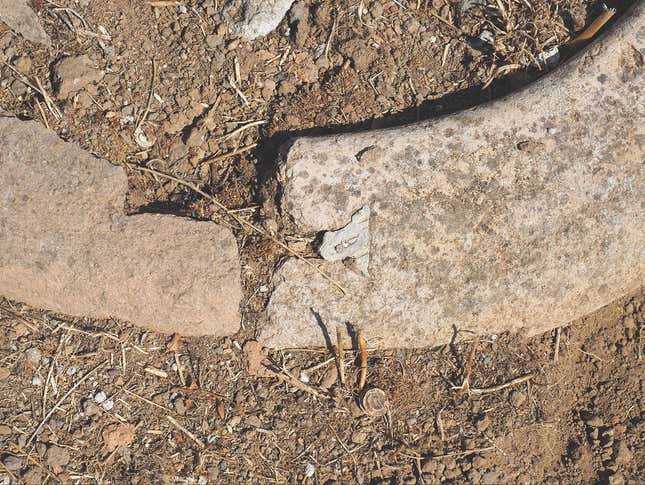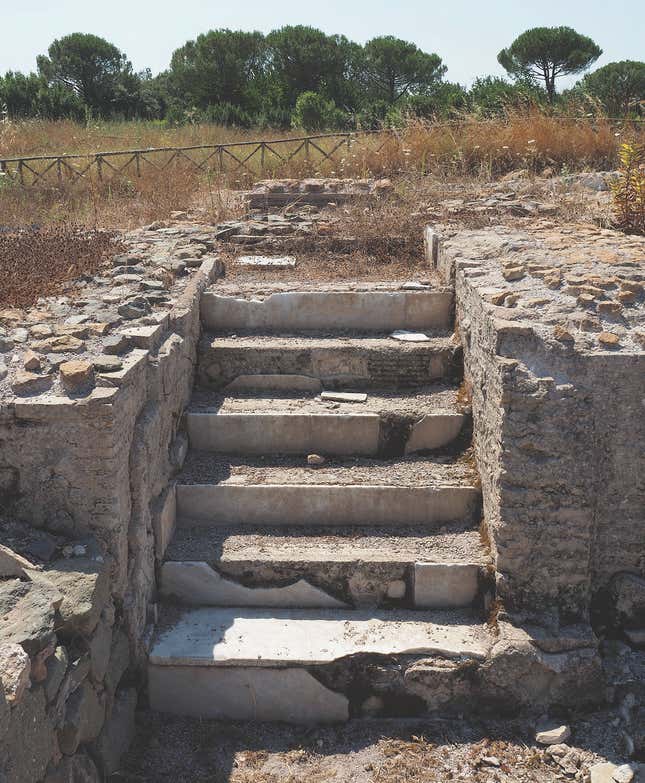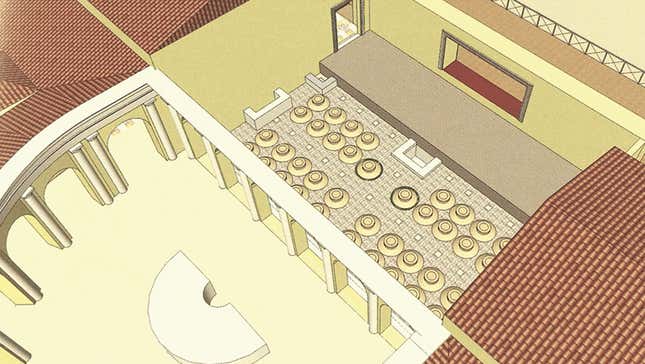
Archaeologists have discovered the remains of an 1,800-year-old winery at the Villa of the Quintilii outside of Rome. By the team’s measure, the winery was designed as much for the spectacle of wine-making as the practice itself.
Decorated rooms around the winery appear to have hosted guests who would observe the wine-making process, the researchers found, and the finishes (including marble floors) seem installed for appearances over practicality. The team’s research is published in Antiquity.
“Agricultural labor was romanticized by the ruling classes of many ancient cultures, especially as it was often the source of both their wealth and status,” said Emlyn Dodd, a researcher at the Institute of Classical Studies at the University of London, in an Antiquity release.
“The excavations at the Villa of the Quintilii reveal to us how ancient Roman elites reimagined the annual vintage as a ‘theatrical’ performance, prioritizing the experience of those observing over the practical needs of the workers,” Dodd added.
Check out the ruins of this remarkable winery-turned-tourist-attraction.
